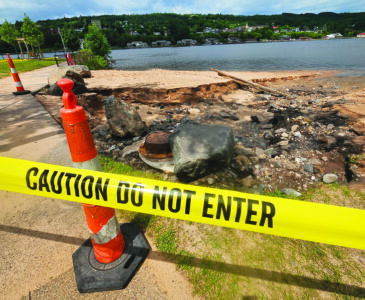Hancock Planning Commission discusses placemaking, neighborhood expansions
HANCOCK — The City Planning Commission met Monday evening in-person in the council chambers of City Hall.
City Manager Mary Babcock introduced the first subject, zoning.
“Over the last couple months, we have talked a lot about zoning, and one of the things that keeps coming up is placemaking.”
Babcock defined placemaking as, “making the city a more livable place to work, play and learn in, and creating different spots in the city that are welcoming. Making places that people care about and want to be in.”
Babcock mentioned placemaking involves bringing in businesses that attract people, which would bring in jobs and attract workers. The workers would “also have to have a place that people want to live to help us advance the community.”
The commission discussed how they would attract and maintain the attention of potential workers.
“We want to have a quality place to live; the uses and activities, creating an active environment, having celebrations with art,” she said. “We’ve done a lot of these things. We have the van Gogh display around the city from the Detroit Institute of the Arts, and we’ve done quite a few celebrations like Key Ingredients, and we also have the Canal Run.
“We need to show we have sociability, making sure we’re friendly to people.”
Babcock noted that some key elements to placebuilding included “mixed use for residential, retail, restaurants; mixed public spaces.”
Committee member and Councilor Kurt Rickard commented that having housing across town from entertainment and shopping could be a pain for some residents.
Ron Blau, a committee member and councilor, noted that there was considerable development happening away from downtown, particularly around the Coburn Town area.
Babcock also noted that, “all the remote workers that have been coming to this area have said that broadband access is very important.”
A lack of broadband internet has been an issue for more rural areas throughout the COVID-19 pandemic, especially among those working from home.
An ongoing goal for the commission is community involvement.
“We’ve been doing a good job of that,” Babcock said. “The community has been involved with the dog park. We had a great turnout of residents, and it was a different group of volunteers. We’re trying to widen the range of activities, we’re doing the farmers market.”
Other city improvements include the Downtown Development Association (DDA) working on facade improvement grants, and trying to build proper parks.
Babcock said the commission will continue to look for more places to use for creative placemaking.
Potential placemaking projects include repurposing older city buildings, increasing local markets, and improving recreational trails.
Blau mentioned some issues he saw moving forward in regards to attracting new businesses.
“I think our challenge is going to be brick and mortar,” he said. “I think, not just here, but everywhere. It’s almost going away, I really hate to say. It’s hard for businesses to make money, especially competing against Amazon.”
Committee member Susan Burack mentioned a simple, grassroots project to improve Hancock.
“In honor of Earth Day, I took a bag and went for a walk to the community garden (On Ryan Street) and filled it with trash,” she said. “I challenge everybody to get a bag and pick up some trash now that the snow is gone.”
The commission discussed altering the zoning of some parts of Hancock to allow for developments, particularly away from downtown, including the neighborhood around the Keweenaw Co-op. Developments would include more sidewalks and business amenities, like a barber shop, commission member Kurt Rickard used for an example.
Discussion of rezoning led the commission to agree on revisiting and possibly updating city maps.
Other potential zoning changes could include a mixed use zone for the Hancock shoreline. Rickard mentioned that the city master plan would have to be reread.
“The master plan has to lay out what parts of town should be developed or redeveloped,” said Rickard. “That’s what we have to do; take a look at the plan because the city is supposed to grow a certain way.”
Campus Drive is another neighborhood the commission may look at for further development.
Rickard again suggested revisiting the maps, looking at potential areas for development, and then updating the city’s master plan. Changes would include zone changes, or making “subzones” within existing zones.
Updated maps along with the updated master plan would make it easier for developers and contractors to know what areas of the cities they can do certain projects in, Babcock suggested.




